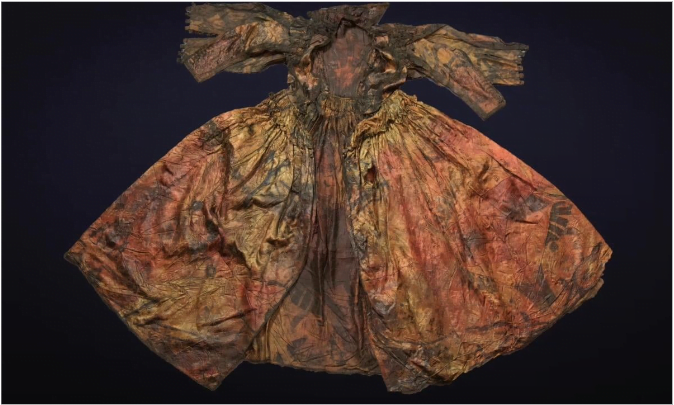Jean Drummond


A powerful member of the English Court, the Countess of Roxburghe may have been involved in a plot to sell the Crown Jewels at the dawn of the Civil War.
The second wife of the 1st Earl of Roxburghe, Jean Drummond (1585-1643) was the sister of John Drummond, 2nd Earl of Perth. The second Earl of Roxburghe was the grandson of the first, who had married the Earl of Perth’s daughter. This means that Jean Drummond was in the strange position of being wife to the 1st Earl of Roxburghe and Great Aunt to the 2nd.
Prior to her marriage to John Ker, Lord Roxburghe in 1614, Jean was a part of Queen Anne of Denmark’s Household, and had charge of the infant Prince Charles (future Charles I) at Dunfermline Palace. Following the accession of James VI to the English throne (as James I), Jean was one of the Scottish Ladies in Waiting to accompany the Queen to London. She was in a position of great responsibility, not only having charge of the Royal children, but also acting as a signatory for the Queens expenditure. As Mistress of the Robes, and as a Catholic, Jean had the capability to be influential in the power play of the great courts of Europe.
This was not lost upon the Spanish ambassador Juan de Tassis, who recommended Jean to his master, Philip III of Spain. She subsequently received a pension from the Spanish, and was known to have received gifts from Spanish diplomats. In 1611, Spanish ambassador Alonso de Velasco wrote that a Catholic priest was concealed at the court of Anne of Denmark, posing as Drummond’s servant.
Her marriage to Robert Ker was celebrated at Somerset House, with the King and Queen in attendance, in February 1614. He was to be created 1st Earl of Roxburghe two years later. It was his rise that caused Jean’s retirement from court life. He had sought to become Chamberlain to the young Prince, without informing the Queen. Jean had not mentioned it to her either, and this perceived betrayal of trust forced her retirement from court in 1617. This was a cause for concern amongst the ambassadors of Spain and Venice, who had used Jean as a valuable source of information close to the Crown.
An account of the Roxburghe expenses from 1619-1630 runs to some 550 pages, and refers to a residence at East Roxburgh, a townhouse in Edinburgh’s Canongate, and Broxmouth near Dunbar in East Lothian, perhaps serving as evidence that whilst her husband profited from being close to the king, she continued to reap the benefits of a covert alliance with Spain.
In 1630, Charles I had wished to appoint the Countess as governess to his son, the future Charles II, but this was objectionable to many due to her religion. A year later, she was appointed governess to the new-born Princess Mary, and later in 1641, to Prince Henry and Princess Elizabeth. A position of great influence and a sign that she was firmly back in royal favour. As the political situation in England worsened, Jean accompanied Princess Mary to The Hague in 1642 after the latter’s marriage to William of Orange.
On the return voyage, a ship of the Royal fleet sank in bad weather. Letters written by Elizabeth Stuart, Queen of Bohemia exiled in The Hague and daughter of James I, mention that some of the Ladies in Waiting lost their wardrobes when the ship went down. A dress, the size and style of which means it possibly belonged to the then 56 year old Jean Drummond, was recovered from the wreck.

The dress recovered from a shipwreck off the Dutch coast, which may have belonged to Jean Drummond.
The fact that some of Elizabeth’s Stuart’s letter was written in cipher may allude to a second purpose in Drummond’s journey to Europe at this time. We already know she was in contact with the Spanish, and received a pension from the Spanish Crown. Some Dutch academics believe that Drummond was a spy in the pay of the Spanish, with the collusion of the Queen whom she once served. The timing of this voyage, at the dawn of what has come to be known as the English Civil War, has led to the suggestion that Drummond was involved in a plot to sell the Crown Jewels through Elizabeth Stuart’s continental contacts, to finance the Royalist cause at home.
We will likely never know the whole truth behind Jean Drummond’s association with Spain, but she remains an enigmatic and powerful woman of great influence at a time of change and upheaval in both England and Scotland.

